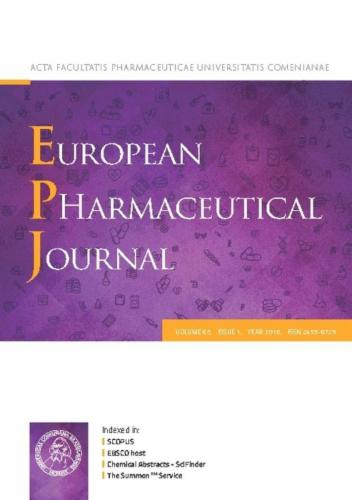微型tim肠液与人类肠液:它们的组成和对难溶性药物的溶解能力的比较
IF 4.7
3区 医学
Q1 PHARMACOLOGY & PHARMACY
引用次数: 0
摘要
tiny-TIM系统为模拟人体胃和小肠的生理过程提供了一个体外平台,通过预测口服制剂在禁食和进食状态下的生物性能,帮助药物开发。为了评估该体外系统的生理相关性,我们对tiny-TIM肠液(TIF)的组成和增溶能力进行了详细分析,并将其与先前收集和分析的人肠液(HIF)进行了比较。此外,研究了粉料类型对TIF组成和增溶能力的影响,分别采用液体粉料和固体粉料。在禁食状态下,TIF表现出较低的脂质浓度(TIF/HIF之比为0.27)和较高的胆盐水平(TIF/HIF之比为1.8)。禁食状态TIF通常高估了HIF的溶解能力,可能是由于其较高的胆盐浓度。在饲喂状态下,TIF含有生物相关的脂质浓度,但与HIF不同,TIF保持单相,没有相分离。这可能是由于较高的胆汁盐水平(是HIF的5.3倍),它将所有脂质溶解到胶束相中。与HIF相比,这导致在TIF胶束部分中水溶性差的模型化合物的溶解度平均增加3.3倍。从液体餐到固体餐的转变对TIF组成和溶解能力的影响最小。本文章由计算机程序翻译,如有差异,请以英文原文为准。

Tiny-TIM intestinal fluids versus human intestinal fluids: A comparison of their composition and solubilizing capacity for poorly soluble drugs
The tiny-TIM system offers an in vitro platform for the simulation of physiological processes occurring in human stomach and small intestine aiding in drug product development by predicting the bioperformance of oral formulations under fasted and fed state intake conditions. To assess this in vitro system in terms of its physiological relevance, we performed a detailed analysis of the composition as well as the solubilizing capacity of tiny-TIM intestinal fluids (TIF), and compared this to previously collected and analysed human intestinal fluids (HIF). Moreover, the impact of meal type on TIF composition and solubilising capacity was investigated by using either a liquid meal or a solid meal. In the fasted state, TIF exhibited lower lipid concentrations with a TIF/HIF ratio of 0.27, and elevated bile salt levels (TIF/HIF ratio of 1.8). Fasted state TIF generally overpredicted the solubilizing capacity of HIF, likely due to its higher bile salt concentrations. In the fed state, TIF contained biorelevant lipid concentrations but remained monophasic without phase separation, unlike HIF. This was likely due to higher bile salt levels (5.3 times that of HIF), which solubilized all lipids into the micellar phase. This resulted on average in a 3.3-fold increase in solubility of the poorly water-soluble model compounds in the micellar fraction of TIF as compared to HIF. Shifting from a liquid to a solid meal had minimal impact on TIF composition and solubilizing capacity.
求助全文
通过发布文献求助,成功后即可免费获取论文全文。
去求助
来源期刊
CiteScore
9.60
自引率
2.20%
发文量
248
审稿时长
50 days
期刊介绍:
The journal publishes research articles, review articles and scientific commentaries on all aspects of the pharmaceutical sciences with emphasis on conceptual novelty and scientific quality. The Editors welcome articles in this multidisciplinary field, with a focus on topics relevant for drug discovery and development.
More specifically, the Journal publishes reports on medicinal chemistry, pharmacology, drug absorption and metabolism, pharmacokinetics and pharmacodynamics, pharmaceutical and biomedical analysis, drug delivery (including gene delivery), drug targeting, pharmaceutical technology, pharmaceutical biotechnology and clinical drug evaluation. The journal will typically not give priority to manuscripts focusing primarily on organic synthesis, natural products, adaptation of analytical approaches, or discussions pertaining to drug policy making.
Scientific commentaries and review articles are generally by invitation only or by consent of the Editors. Proceedings of scientific meetings may be published as special issues or supplements to the Journal.

 求助内容:
求助内容: 应助结果提醒方式:
应助结果提醒方式:


